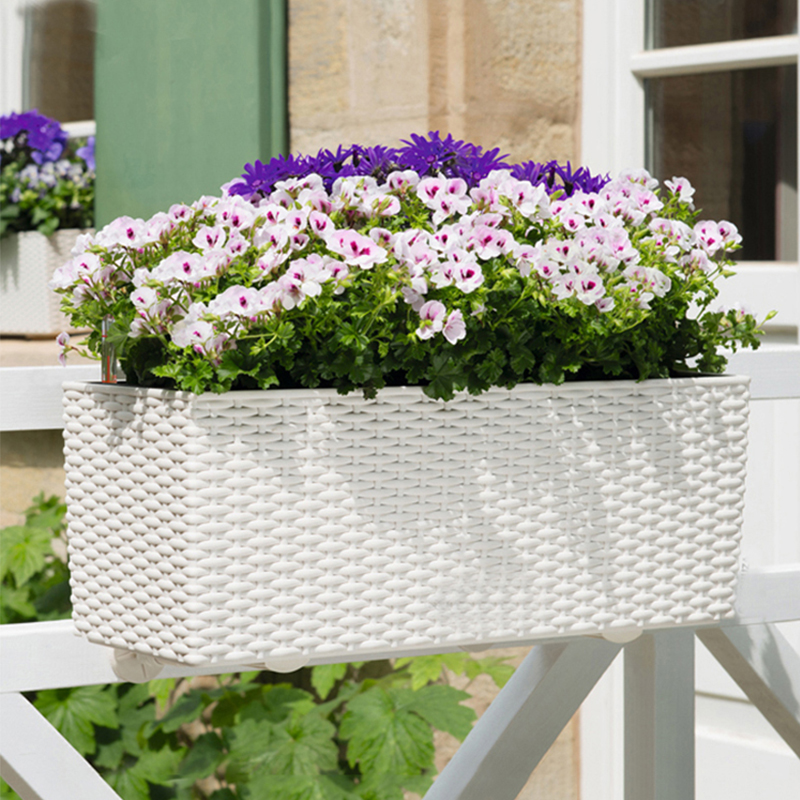When it comes to growing healthy plants, many factors come into play—soil quality, watering habits, light exposure, and even the type of pot used. Among these considerations, the color of the pot itself is often overlooked. However, pot color can have a subtle yet meaningful effect on plant growth and health, especially when using containers like colored plastic pots or small biodegradable plant pots. Understanding how different colors influence temperature and light absorption can help gardeners make better decisions for their indoor or outdoor gardens.

Colored plastic pots are popular choices for many gardeners because they are durable, lightweight, and available in a wide range of hues. But beyond aesthetics, the color of these pots affects how much heat is absorbed or reflected. Dark-colored pots tend to absorb more sunlight, which raises the temperature of the soil inside. For heat-loving plants, this might provide a beneficial microclimate that encourages faster growth. On the other hand, excessive heat from dark pots can stress roots, especially in warmer climates, potentially hindering plant development.
In contrast, lighter-colored pots reflect more sunlight, keeping the soil cooler. This can be advantageous for plants that prefer cooler root zones or for use in very sunny locations where soil overheating is a risk. For example, pastel-colored or white colored plastic pots may help maintain more stable soil temperatures. Gardeners using small biodegradable plant pots should also consider pot color, although the natural tones of these pots usually offer a moderate temperature effect due to their material properties.
Plastic trellis fencing is another element often paired with container gardening, especially in compact urban spaces. While plastic trellis fencing itself does not directly influence pot color, it can affect light exposure and airflow around the pots. When colored plastic pots are placed near or within plastic trellis fencing, the combination can create varying microclimates. Some trellis colors may reflect light differently, subtly influencing the temperature around the pots and therefore impacting plant growth.
One interesting consideration is that colored plastic pots are also valued for their ability to integrate into different garden designs. Gardeners might choose bright hues to brighten up a patio or muted earth tones to blend in with a natural landscape. When using small biodegradable plant pots for seed starting or transplanting, the neutral tones of these pots generally avoid bad heat absorption, making them versatile for various seedlings and young plants.
The material of the pot also interacts with color to affect plant growth. Plastic pots, including colored plastic pots, tend to heat up more quickly than ceramic or clay pots. This is particularly true under direct sunlight. Therefore, gardeners should select pot colors that complement the plant species’ heat tolerance. For example, succulents or Mediterranean herbs might do well in darker colored plastic pots that warm the soil, while delicate leafy greens could benefit from lighter-colored containers that keep temperatures moderate.
In terms of sustainability, small biodegradable plant pots offer an eco-friendly alternative to plastic pots. Although these pots are often natural in color, they can sometimes be tinted with natural dyes, which might influence heat absorption slightly. Their biodegradability means they break down in the soil over time, which is advantageous for transplanting but requires careful monitoring to avoid pot degradation before the plant is ready.
When setting up a garden space using plastic trellis fencing and a variety of pot colors, it is worth experimenting with placement. Placing darker colored plastic pots in shaded areas or protected corners can balance heat absorption without risking root damage. Conversely, lighter-colored pots can be used in sunnier spots to help regulate soil temperature.
In conclusion, the color of plant pots, especially colored plastic pots, plays a practical role beyond decoration. It influences soil temperature and light reflection, both of which affect plant growth and health. Using plastic trellis fencing thoughtfully in combination with pot color choices can help create favorable growing conditions. Small biodegradable plant pots provide additional options for gardeners interested in sustainability without sacrificing growth potential. Paying attention to these details can improve overall gardening outcomes, ensuring plants receive the right balance of warmth and protection.

 English
English 日本語
日本語 Español
Español Deutsch
Deutsch عربى
عربى

